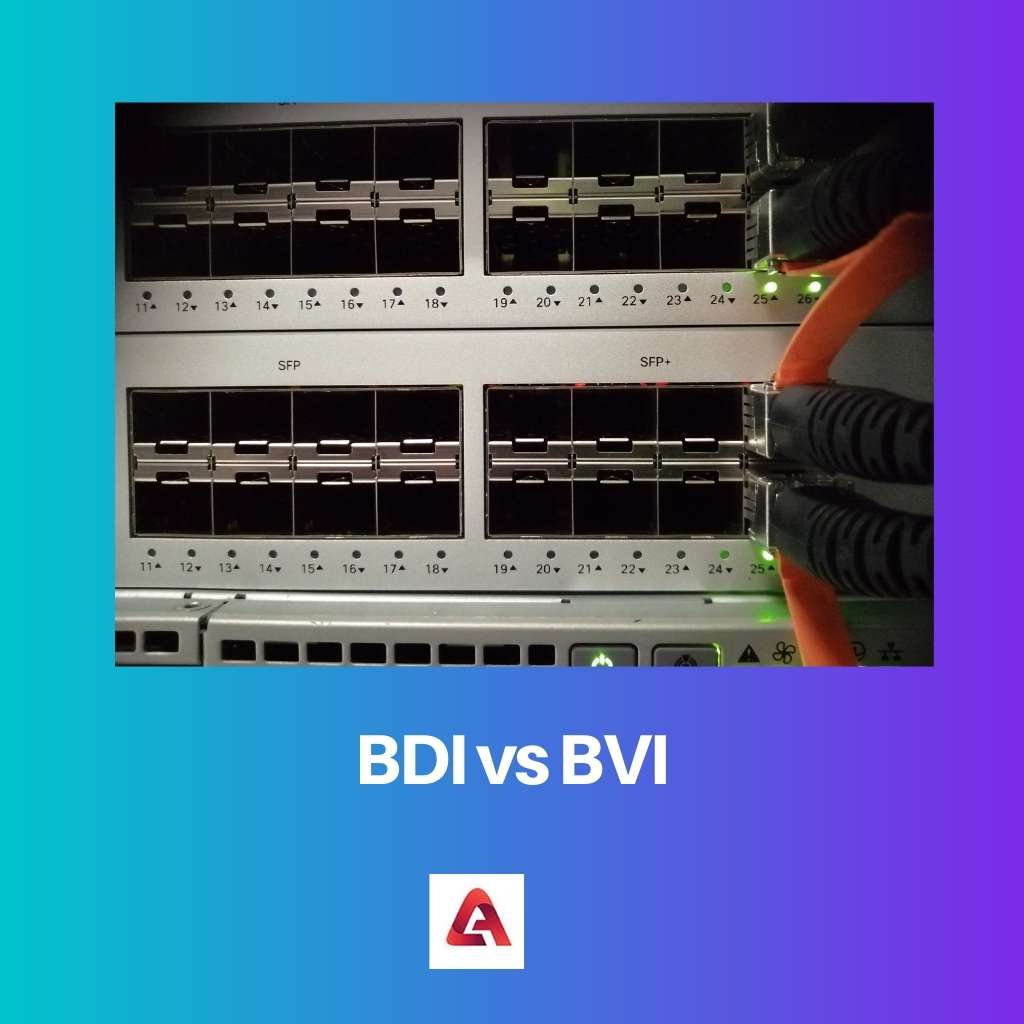We are quite familiar with the term ‘Interface.’ We all do have a basic and minimum knowledge about its function and working. In simple words, it refers to a medium or a point of connection.
However, when we hear terms like Cisco BDI and Cisco BVI, it sounds a bit too technical. It is not expected for common people to understand it.
Although both of them are interfaces, we need some detailed knowledge to understand them better.
In this article, we shall aim to learn these two terms individually. These terms are used in their abbreviated forms and are related to the bridging network technique.
They do possess a system of layers. We shall focus on their features, capacities, and limitations. This will eventually help us to find out the distinctive point of difference.
Key Takeaways
- Cisco BDI (Bridge Domain Interface) allows the creation of multiple virtual networks over a single physical network.
- Cisco BVI (Bridge Virtual Interface) enables Layer 3 routing on a bridge group, connecting different Layer 2 networks.
- Both BDI and BVI contribute to efficient network management and improved performance in Cisco devices.
BDI vs BVI
The Cisco feature that allows you to bridge interfaces on a router in IOS-XE is Cisco BDI. It belongs to the Cisco Bridge Group and has two or three layers. In IOS, Cisco BVI feature is used to bridge interfaces. It belongs to the Cisco Bridge Domain and only has two layers.

Cisco BDI means Cisco Bridge Domain Interface. It is used to group the ridges according to their specific criteria. It is a platform that is used to define a domain.
It is mainly suited for the IOS-XE system. However, it is to be noted that, the software that we are using might not support all the features.
Cisco BVI means Cisco Bridge Virtual Interface. It is a virtual interface that works just like a normal interface. It is mainly suitable for the IOs system.
The function of Cisco BVI is quite similar to that of a VLAN. Here, the software is defined with the help of a router.
Comparison Table
| Parameters of Comparison | Cisco BDI | Cisco BVI |
|---|---|---|
| Function | It is used to organize the bridging. | It is used to forward the bridging. |
| Full form | Cisco BDI stands for Cisco Bridge Domain Interface. | Cisco BVI stands for Cisco Bridge Virtual Interface. |
| Layering | It is two-layered. | It can be two or three-layered. |
| Platform | It is used for the IOS-XE platform. | It is used for the IOs platform. |
| Type | It is a system interface. | It is a virtual interface. |
What is Cisco BDI?
Cisco BDI consists of two types of layers. They are horizontal layers and vertical layers, respectively.
The main function of BDI is to allow the flow of traffic between the two layers of the network. The BDI can be identified with the help of the Bridge Domain itself.
However, the number of links is restricted to one.
In other words, we can say that a bridge domain can be linked with only a single BDI. It supports various IP forwarding features. Some of them include marking, policing, etc.
When we shut down the Cisco BVI, the data service of the three layers automatically stops. This is because the whole system is interlinked. Cisco BDI is an internal interface.
There are several steps in creating a Bridge Domain Interface. At first, we need to define it, followed by naming it.
Henceforth, we need to assign an IP address and then specify it. After the completion of this process, the bridge domain linked to it gets activated automatically.
Also, it contains restrictions that should be noted carefully. Every system can support 4096 BDI and that itself is the limit.
It does not support certain features such as shaping or queuing. It also does not support the feature of BFD, commonly known as Bidirectional Forwarding Detection.
What is Cisco BVI?
The Cisco BVI represents the bridge grouping but itself does not support the feature of the bridge. The Cisco BVI number is itself the Bridge Group number.
It is referred to the group that the virtual interface represents. It acts like any other common interface.
It gets activated when a bridge command is received. The main criteria are to match the BVI number and the group number.
The main function of Cisco BVI is to permit the router bridge protocol or the interface. Hence, we can say that it is a software-based routing system.
Cisco BVI is very useful in configuring wireless access points, commonly referred to as APs. Hence, it is used for the management of traffic.
Cisco BVI can be a good substitute for Vlan. There are quite many overlapping features between the two. It supports secondary addresses.
While using Cisco BVI, we can associate it with a particular bridge group. The system uses a MAC address and is independent of any kind of domain identifier.
Main Differences Between Cisco BDI and Cisco BVI
- One of the distinctive differences between Cisco BDI and Cisco BVI is their layering. Cisco BDI is restricted to two layers while Cisco BVI can have two or three layers
- Next is their function, which is another essential point. Cisco BDI mainly focuses on organizing the traffic flow in the bridging. On the other hand, Cisco BVI focuses on forwarding the process.
- We can define Cisco BDI as a system interface. However, Cisco BVI is a virtual interface. It functions like any other interface.
- Cisco BDI is linked to the Cisco Bridge Domain, whereas, Cisco BVI is linked to the Cisco Bridge Group.
- Coming to their suitable platforms, IOS-XE is the platform for Cisco BDI. Whereas, IOs is the platform for Cisco BVI.
- https://books.google.com/books?hl=en&lr=&id=-L-2AgAAQBAJ&oi=fnd&pg=PP1&dq=Difference+Between+Cisco+BDI+and+Cisco+BVI+&ots=p24JffLX6x&sig=kCtXuaAh1f12uHKD6GIl4vuZqcs
- https://www.alcatron.net/Cisco%20Live%202015%20Melbourne/Cisco%20Live%20Content/Data%20Centre/BRKDCT-2404%20VXLAN%20Deployment%20Models%20-%20A%20Practical%20Perspective.pdf
